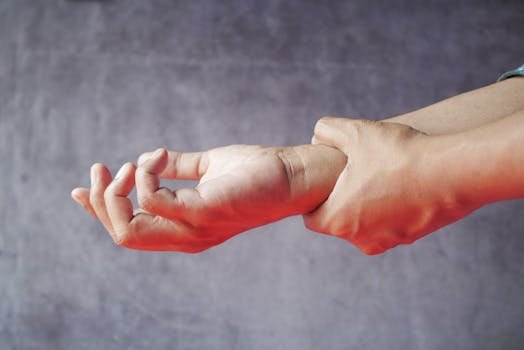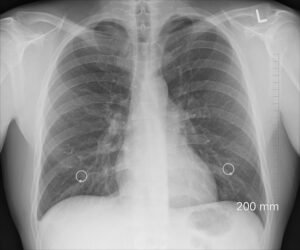Overview of large nerves
Now to radiculopathy and mononeuropathy. You might say from my previous articles that your nerves are the issues but cannot say it is the small nerves. Meaning that tiny nerve pain is not tips of fingers and toes. Also, pains are not like a gloves/stocking’s distribution. What is it? Remember in prior articles we were talking about the spinal cord, the big nerve cord running down from the brain. The cord is protected by the bone of the vertebral column. Some branches come out of the sides, and we call them based on their relation to the vertebra-bones making up the vertebral column. So L1 nerve starts below L1 vertebra. The spine is separated to cervical (neck), thoracic (chest), lumbar (lower back), and sacral (tail bone). These larger nerves then form complex nets that we call plexus, such as the brachial plexus close to the armpit. Then new nerves are made up to give supply to certain areas. Therefore, a certain tingling could be hard to know where it comes from, but common is common. The most classical way, and typically recommended way to start, is a nerve conduction study. Nerve conduction study measures nerves power and can help you find the issue. The less classical way, when docs suspect a pressure at the spinal cord level, is to do an MRI for the specific area of the spine. The latter might be the way in a lot of patients as nerve conduction studies can be done by a few specialists, mainly neurologists.
Radiculopathy: spine pain that moves down the limbs
What does the patient/primary care team can do? I go to my usual adage of history and exam. For one, I strongly suggest fixing anything that can lead to small fiber neuropathy as that might help. For example, try abstaining from alcohol and controlling diabetes. Also do not forget about our friends, the physical therapists as their efforts could diagnose AND treat your issue. Then let us go from the distribution of the tingling. Nerves can be compression at origin level or at joint levels. For arms, if the pain/tingling involves a whole limb (shoulder, arm, forearm and hand OR lower back, thigh, leg, and foot) then we are looking at an issue starting from the spine. It might be easier at that point to obtain an MRI of the spine. As likely you are looking at something in the origin.
Median nerve mononeuropathy
What about if it is something less than that? Carpal tunnel syndrome is an example of that, which is well known publicly. Carpal tunnel syndrome is a compression of a nerve called “the median nerve” at the level of the wrist. The wrists have carpal bones and infront of these (toward your palm) there is arteries, veins, and nerves. These delicate structures are covered with a band we call retinaculum. If anything causes swelling of the wrist area, the poor medial nerve gets squished and therefore works less efficiently. In that scenario the thumb, the index finger, and possibly the middle finger all through the palm area under them is numb. You can start by finding reasons that are making you puffy in that area or in general such as thyroid issues, diabetes, pregnancy, manual repetitive movement, trauma, or Rheumatoid arthritis. Treat these issues and talk to your primary about management options.
Ulnar mononeuropathy
What about if your pinky, ring finger, and the area of the forearm before them from the elbows is numb/painful? This is likely an issue of the ulnar nerve. This is a side nerve that can be compressed at the inside protrusion of the elbow, we call medial epicondylitis. Individuals who type, like me now, might rest their elbows on the desk, unintentionally pressing that nerve. Other individuals, the elbows could be pressured by trauma and swelling of the elbow. In certain scenarios, patients might have an ulnar nerve that jumps around one of the elbow bones making it painful. At certain severe cases, the solution might be surgical intervention.
Foot drop: mononeuropathy or radiculopathy part 1
As a Rheumatologist, I feel compelled to talk about foot drop. So literally the foot drops and cannot be elevated. Typically, this is either because of nerve compression at the spine. But could be from peroneal nerve pressure. This Nerve can be compressed in people who crosses their legs all the time. I even saw one patient that was so bad that he had to be admitted only to find that he was putting legs on each other. Why was this guy admitted to the hospital though. There is a cause of foot drop, which is relatively rare, caused by autoimmune diseases. We call that mononeurtitis multiplex. Basically, in autoimmune disease, blood vessels can be attacked by the immune system. The blood vessels feeding the nerve get affected. Why do the blood vessels of the legs rather than the arm get affected? Well, the basic explanation is that an immune system component called “complements” when they clump together, they become heavier and usually precipitate in the blood vessels of the legs. One of these blood vessels supplies the peroneal nerve.
Foot drop: mononeuropathy or radiculopathy part 2
How can doctors figure out if the foot drop is compression at the spine versus a peroneal neuropathy? A foot can twist to the outside we call eversion and twist to the inside we call inversion. In Peroneal nerve issue, patients cannot do eversion-twisting to the outside. However, in general history, exams, and tests by docs helps. In general, regardless of the cause of foot drop, it should be evaluated as soon as possible by a physician or who works in their capacity.
Summary
In future articles, I will talk about options of management of these nerve issues. In summary, nerves can be affected at different levels. Most common areas are at spine levels and for some special nerves at areas close to joints.





Comments
Pingback: Diabetes arthritis and pain quick guidance. ANA and Diabetes - Medical Hermit